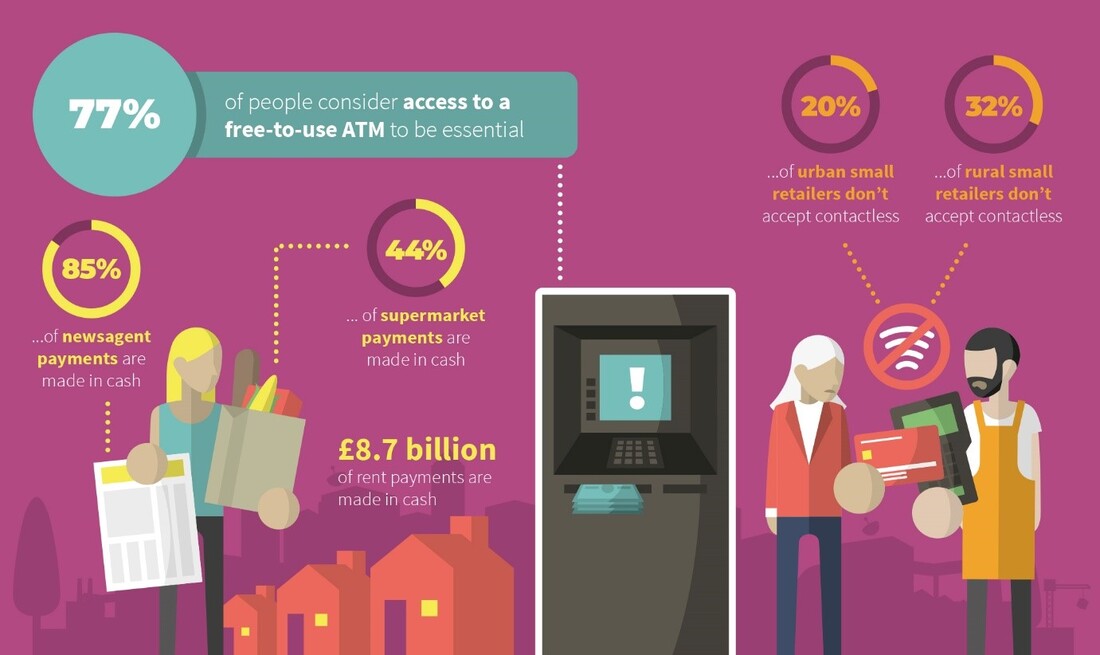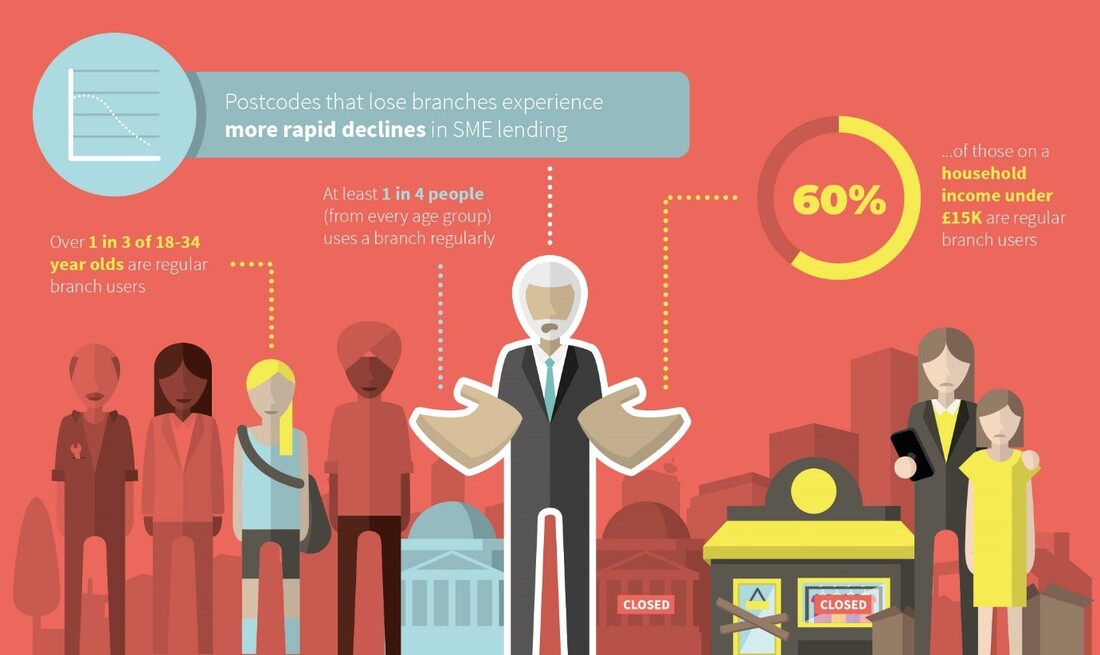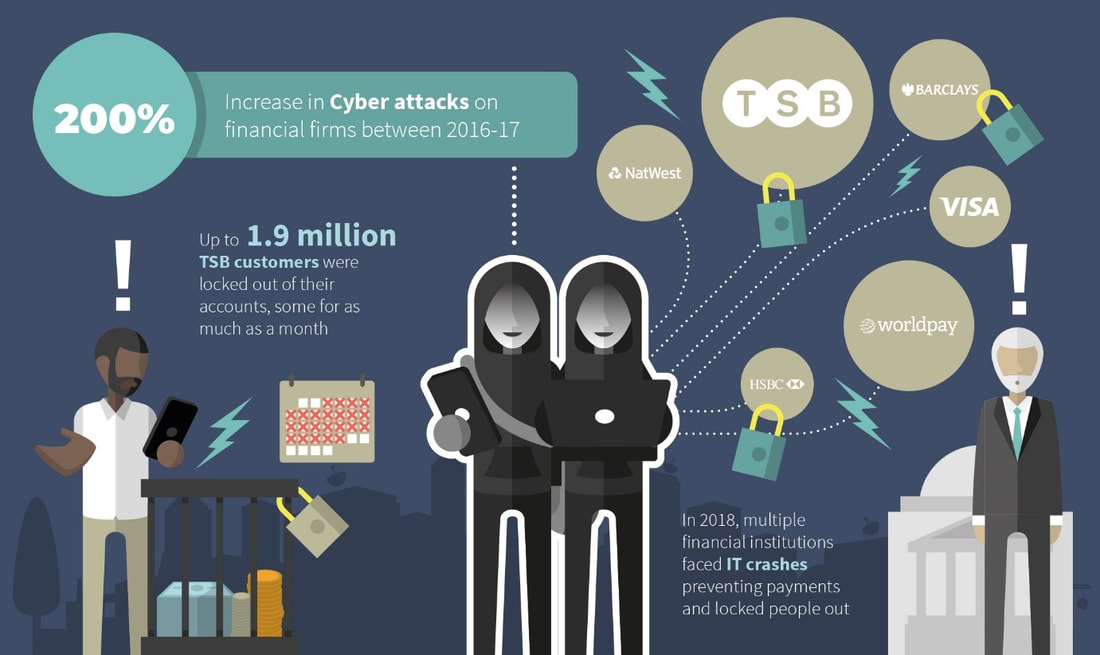Loading...
News

4 Reasons to Protect Cash and Bank Branches
Wednesday, August 07, 2019
View ShowroomBy Mark Hall, Deputy Head of Engagement at the RSA.
Cashing Out finds that a disorderly ‘dash from cash’ would be both economically risky and socially harmful – and we risk sleep walking towards this unnecessary cliff edge.
Here are our top 4 reasons why we need a coordinated strategy to make sure we maintain a physical banking infrastructure capable of supporting economic resilience and inclusive growth.
Providing Choice and Competition
Cashing Out finds that a disorderly ‘dash from cash’ would be both economically risky and socially harmful – and we risk sleep walking towards this unnecessary cliff edge.
Here are our top 4 reasons why we need a coordinated strategy to make sure we maintain a physical banking infrastructure capable of supporting economic resilience and inclusive growth.
Providing Choice and Competition

While cash may no longer be king, most of us (97%) still use it in some way or form. Whether it’s for every day essentials or in case of emergency, cash transactions account for a third of all payments - a significant slice of economic activity. The rise in digital payments will continue over the next decade as cash usage continues to fall, but some rely on cash far more than others and those that do are much more likely to come from low income households.
Cash doesn’t discriminate. It’s free to use and everyone has access to it. It provides consumer choice and essential market competition to private digital payment systems. Every digital transaction, whether a contactless payment in your local shop or an online purchase, is making a profit for private companies who are building profiles on our spending habits. Cash allows us direct access to our money without creating data for big advertising agencies to exploit.
But the divide between those who use cash and those who don’t is growing, with 3.4 million having switched to digital and rarely using cash at all, versus 2.2 million people who rely almost wholly on cash. And a much larger proportion of the population are still dependant on cash, with the Access to Cash Review reporting that nearly half of us think that living without cash would be problematic including 8 million, who would find life “near impossible”.
Promoting Financial Inclusion
Cash doesn’t discriminate. It’s free to use and everyone has access to it. It provides consumer choice and essential market competition to private digital payment systems. Every digital transaction, whether a contactless payment in your local shop or an online purchase, is making a profit for private companies who are building profiles on our spending habits. Cash allows us direct access to our money without creating data for big advertising agencies to exploit.
But the divide between those who use cash and those who don’t is growing, with 3.4 million having switched to digital and rarely using cash at all, versus 2.2 million people who rely almost wholly on cash. And a much larger proportion of the population are still dependant on cash, with the Access to Cash Review reporting that nearly half of us think that living without cash would be problematic including 8 million, who would find life “near impossible”.
Promoting Financial Inclusion

There are several reasons why some, often more vulnerable groups, are more likely to rely on cash. Despite the rise of banking apps and online tools, many still find cash the simplest and most convenient way to budget and allocate money for everyday expenses. While many of us can easily log on and manage our finances on our morning commute, a staggering number of people have no real alternative to cash with 4.5 million adults not having access to the internet and a further 9.2 million adults having low digital literacy.
While most us take having a bank account for granted, around 1.23 million people live without one, most on low incomes and half of those without a bank accounts earn less than £5,000. Some are wary of using banks due to lack of trust or fear of unexpected fees and charges, and others struggling with debt or lacking sufficient ID are locked out of the system, not even able to access to a basic current account.
Those who are reliant on cash also rely heavily on the infrastructure that helps it flow through our economy. While there are still a wide range of people using branches including at least one in four from every age group, those on low incomes are more likely to use them regularly. Despite almost everyone using still cash-points and 77% of us considering access to them essential, over 10 million people live more than 1km away from one, with those living in rural areas or on satellite housing estates and on low incomes most likely to find it harder to access them, as well as those with additional needs or mobility issues.
Supporting Local Economies and SMEs
While most us take having a bank account for granted, around 1.23 million people live without one, most on low incomes and half of those without a bank accounts earn less than £5,000. Some are wary of using banks due to lack of trust or fear of unexpected fees and charges, and others struggling with debt or lacking sufficient ID are locked out of the system, not even able to access to a basic current account.
Those who are reliant on cash also rely heavily on the infrastructure that helps it flow through our economy. While there are still a wide range of people using branches including at least one in four from every age group, those on low incomes are more likely to use them regularly. Despite almost everyone using still cash-points and 77% of us considering access to them essential, over 10 million people live more than 1km away from one, with those living in rural areas or on satellite housing estates and on low incomes most likely to find it harder to access them, as well as those with additional needs or mobility issues.
Supporting Local Economies and SMEs

The number of UK bank branches is declining rapidly. Between 1989 and 2012 Britain lost 57% of its bank branches, falling from 20,583 to only 8,837.
The latest wave of branch closures announced recently by Santander (which is also putting 1,270 jobs at risk) along with latest data on branch closures from consumer group Which?, shows this trend is set to continue.
As well as the impact on individuals, branch closures can also shake the foundations of small businesses, particularly those such as newsagents who take 85% of payments in cash, if their communities are left without essential facilities they need to handle and process cash effectively.
Our research also shows that these swathes of branch closures are also having a negative impact on small businesses’ ability to access finance. Analysis on available bank lending data shows that areas experiencing branch closures also experience a greater fall in lending to SMEs (Small and Medium Enterprises) than areas without a closure.
Much more needs to be done to assess the economic impact of branch closures and local authorities need to do more to ensure essential cash infrastructure remains available, particularly for small businesses.
Boosting Economic Resilience
The latest wave of branch closures announced recently by Santander (which is also putting 1,270 jobs at risk) along with latest data on branch closures from consumer group Which?, shows this trend is set to continue.
As well as the impact on individuals, branch closures can also shake the foundations of small businesses, particularly those such as newsagents who take 85% of payments in cash, if their communities are left without essential facilities they need to handle and process cash effectively.
Our research also shows that these swathes of branch closures are also having a negative impact on small businesses’ ability to access finance. Analysis on available bank lending data shows that areas experiencing branch closures also experience a greater fall in lending to SMEs (Small and Medium Enterprises) than areas without a closure.
Much more needs to be done to assess the economic impact of branch closures and local authorities need to do more to ensure essential cash infrastructure remains available, particularly for small businesses.
Boosting Economic Resilience

Cash is free to use, accessible to all and leaves no digital trace. Digital payments systems on the other hand bring with them two major risks that cash does not have to carry, IT failure and cybercrime.
IT failures, which can often provide minor inconvenience to mobile banking app users, can and do cause major global disruption. Throughout 2018 we saw the collapse of the Visa network, major disruption to all the big banking groups, and a major IT meltdown at TSB with nearly 2 million customers experiencing major issues and some unable to access their accounts online for over a month.
Between 2016-17 cyber-attacks on financial firms went up 200%, showing that digital payments are very much a target of hackers and fraudsters looking to disrupt the system. Protecting digital payments from cybercrime is now one of the top priorities of the Financial Conduct Authority after fining Tesco Bank £16.4 million for deficiencies in its cybersecurity systems.
While cash can also be used for fraud and criminality, this is quite minor in comparison with roughly £4.83 million counterfeit notes in circulation compared to the £3.1 billion cost of cybercrime to UK consumers.
When digital payments come up against these threats, cash carries on unphased, providing stability and security as a backup everyone can turn to.
The rise of digital banking has revolutionised how many of us manage our finances and make our purchases. However, we are far from a position where everyone can thrive without cash.
These four reasons to protect cash and branches highlight the hidden costs and consequences of moving to a cashless society. We must maintain access to a free at the point of use payment and cannot afford to phase out cash until we have an inclusive and accessible alternative that works for everyone.
Find out more by reading the full report Cashing Out: the hidden costs and consequences of moving to a cashless society or by reading the Executive Summary of the report online on Medium.
IT failures, which can often provide minor inconvenience to mobile banking app users, can and do cause major global disruption. Throughout 2018 we saw the collapse of the Visa network, major disruption to all the big banking groups, and a major IT meltdown at TSB with nearly 2 million customers experiencing major issues and some unable to access their accounts online for over a month.
Between 2016-17 cyber-attacks on financial firms went up 200%, showing that digital payments are very much a target of hackers and fraudsters looking to disrupt the system. Protecting digital payments from cybercrime is now one of the top priorities of the Financial Conduct Authority after fining Tesco Bank £16.4 million for deficiencies in its cybersecurity systems.
While cash can also be used for fraud and criminality, this is quite minor in comparison with roughly £4.83 million counterfeit notes in circulation compared to the £3.1 billion cost of cybercrime to UK consumers.
When digital payments come up against these threats, cash carries on unphased, providing stability and security as a backup everyone can turn to.
The rise of digital banking has revolutionised how many of us manage our finances and make our purchases. However, we are far from a position where everyone can thrive without cash.
These four reasons to protect cash and branches highlight the hidden costs and consequences of moving to a cashless society. We must maintain access to a free at the point of use payment and cannot afford to phase out cash until we have an inclusive and accessible alternative that works for everyone.
Find out more by reading the full report Cashing Out: the hidden costs and consequences of moving to a cashless society or by reading the Executive Summary of the report online on Medium.
Additional Resources from ATM Industry Association
- 7/25/2024 - ATM Security Association: ATM Security Trivia Time
- 7/24/2024 - Cash-only spending in surprise jump as people budget
- 7/18/2024 - The Future of Cash: Updates on Cash Transactions and Upcoming Industry Events
- 7/18/2024 - The Asia/Asia Pacific Region Just Got Stronger!
- 7/18/2024 - New Zealand Marks 25 Years of Polymer Banknotes
- Show All ATM Industry Association Press Releases / Blog Posts


























